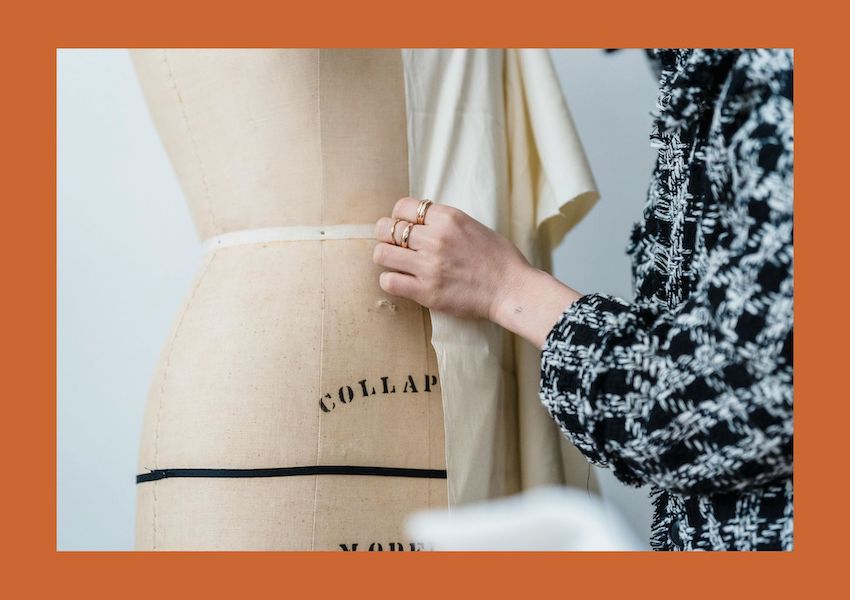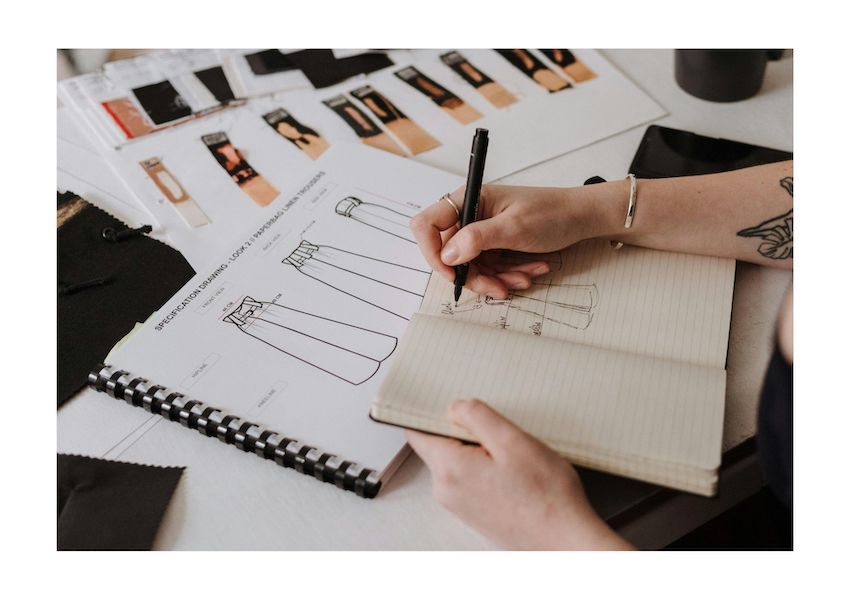How to Create the Ideal Product Sample for Your Apparel Brand

A product sample is a physical prototype of a clothing design, meticulously created to reflect the specifications and details outlined in the designer’s sketches. It serves as a tangible representation of the envisioned garment, allowing manufacturers and designers to see, touch and evaluate the product before it goes into production.
Creating a product sample is a critical step in the fashion production process and it is crucial for several reasons. It ensures that the final product meets your brand’s quality and design standards, minimizes financial risks, and enhances communication between the designer and the manufacturer. By thoroughly evaluating and refining the sample, fashion brands can confidently proceed to mass production, delivering high-quality garments to customers.
Samples are a work in progress designed to be refined, corrected, and adjusted until you have a garment you are happy to send into the world. Here’s an in-depth guide to understanding what a product sample is, the garment sampling process, and how fashion brands can create the ideal samples before mass-producing their goods.

The Garment Sampling Process
There are different garment samples for every stage of product development and production and they each play a role in ensuring you get what you ordered, and your customers get the best possible product. Technically, there is no limit to how many samples you can develop; it all depends on your budget and timeframe.
How do you make a garment sample? There are a few steps to making one single sample:
Design: The design is created by the brand and then analyzed by the factory team. Before any sample creation starts, all questions and clarifications are discussed.
Paper pattern: These are paper pieces that act as stencils for the garment.
Pattern cutting: The factory will trace the paper patterns onto the fabric and then cut the pieces out.
Sewing: The factory will then sew all the pattern pieces together.
Fit model: A fit model will try on the garment to help you and the factory get a better idea of how the garment will look on a person. Any adjustments will be made as necessary here.
Sample review: The factory will send you a sample for review. You can give feedback with any necessary changes and the factory will make adjustments. Once you are happy with the sample, it is approved and moves on to the next step.

Types of Samples
There are various types of samples used throughout the product development and production lifecycle. These include pre-development, development, production and factory samples.
Pre-development samples
These are the initial prototypes that you make, likely by yourself, before you pass your design idea on to a factory to create your sample. They are often used for initial design and concept verification. A pre-development sample will usually begin with a digital garment sample, which is a virtual representation of your design without the need for physical materials.
The first physical sample you create is called a mockup, and it can range from a prototype you craft yourself from an easy-to-use fabric such as muslin, to a professional version made by a manufacturer’s sample room. The main use of a mockup sample is to act as a visual guide and help communicate your ideas to your manufacturer before you go any further in the product development process.
Development samples
Created just before the production phase, these are the garment samples that are made at your chosen factory with production-quality materials to ensure the design is feasible for mass production. They are similar to pre-development samples, but it is important to have them made at the same factory that will be making your final product. There are also various samples that make up the pre-development process.
Fit sample: This is the first sample you’ll get from your factory. They are usually made from cheap fabrics such as muslin. The main goal of a fit sample is to see how the design looks and fits on a human body. Most major design changes are often made at this stage.
Proto sample: Once you are happy with your fit sample, you can move forward with a proto sample, which is a closer representation of the final product using readily available materials that are similar to production-quality components. A proto sample gives you a better idea of what your garment will look like with its finishings and trimmings, such as buttons, zippers or prints.
Pre-production sample: Also known as a production-quality sample, this sample can be used by you and your manufacturing partner as a test run for the production process. It‘s made with the exact fabric and trims that will be used in production. If your pre-production sample is not right, you can’t move forward with manufacturing. This is where you ensure that basic criteria such as fit, fabrication and color approvals are all done.
Size-set sample: When you are happy with every detail of your pre-production sample, then you create a version in each size that you plan to offer. This is to ensure the fit and design work across the entire size range for your consumers.
Salesman sample: This is also known as a marketing sample, and is used for, as the name implies, marketing purposes such as trade shows, showrooms and photoshoots. This is the sample that you send out to buyers, for example, or used in your seasonal campaign for your brand’s collections.
Production sample: These are further samples made during production to ensure everything is proceeding smoothly and to maintain quality control.
Sealed sample: Also known as gold samples, these are the approved final samples used as the standard for mass production. Gold-sealed samples are essentially the blueprint for mass-producing your garment and all final pieces in your production run should exactly match the gold sample. If anything goes wrong with your your apparel production, you can refer to the gold sample as the standard that each garment should follow.
Top of production sample (TOP): This is the final check in the production process to catch any last-minute issues. The TOP sample is your chance to check the quality of your bulk fabric, trims and fastenings to ensure that all the components are exactly as they should be.
Shipment sample: Once production is complete, your manufacturer should send you a few pieces from the production order to ensure quality before shipping. This step also gives you one final chance to make sure your goods are perfect before they are shipped out to your retail partners.
Press sample: This is similar to the production sample but it comes directly from your production run so that it can be used to sell your collections to potential buyers. The press sample is the one you send to models, editors, publications or influencers to be used for promotional purposes.
Factory sample: This is an identical sample of the finished garments that is kept by the factory to resolve any issues that arise. Note: A factory sample is what your manufacturer should show you as examples of their work when you are vetting potential partners, so you can check the quality of their output.
